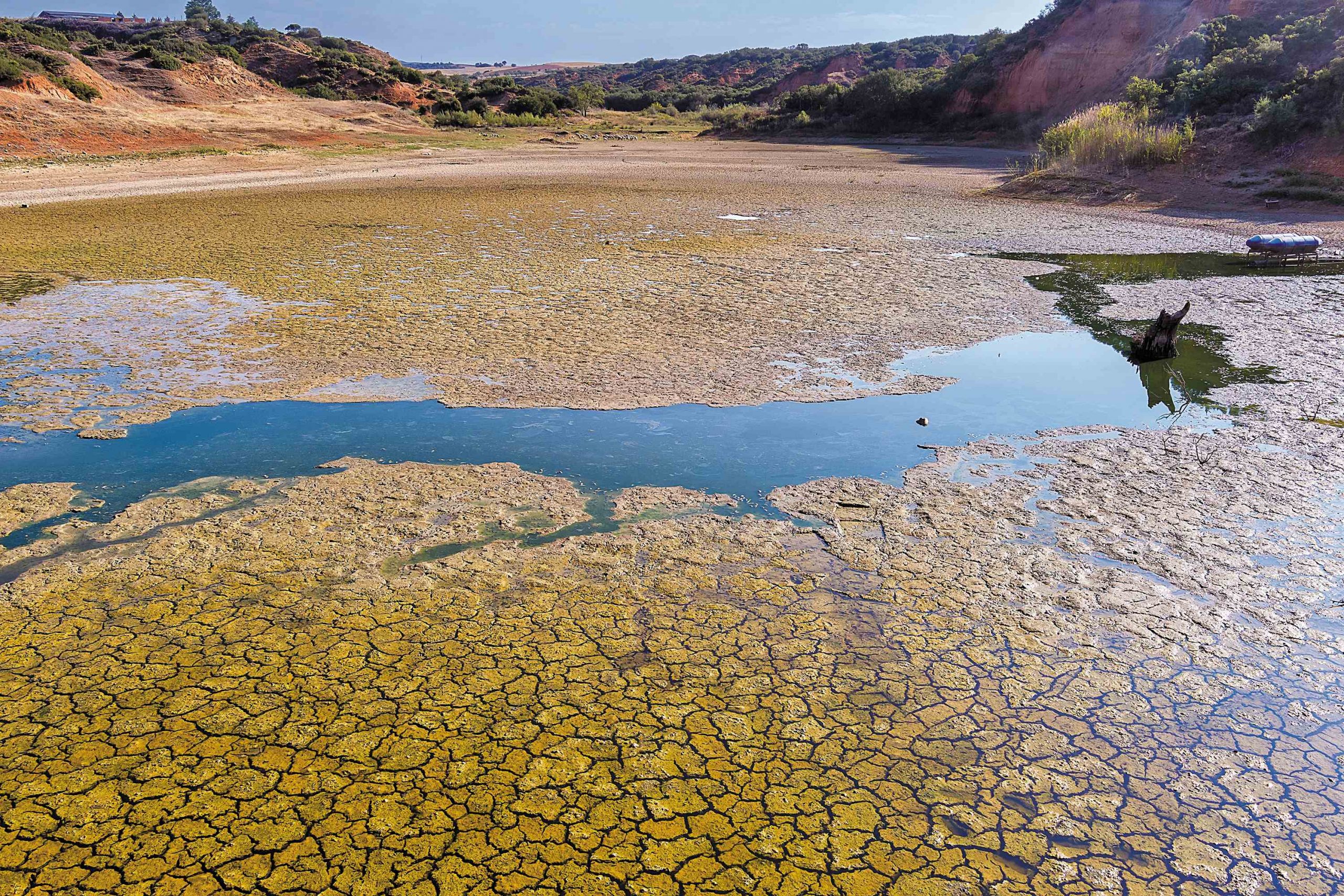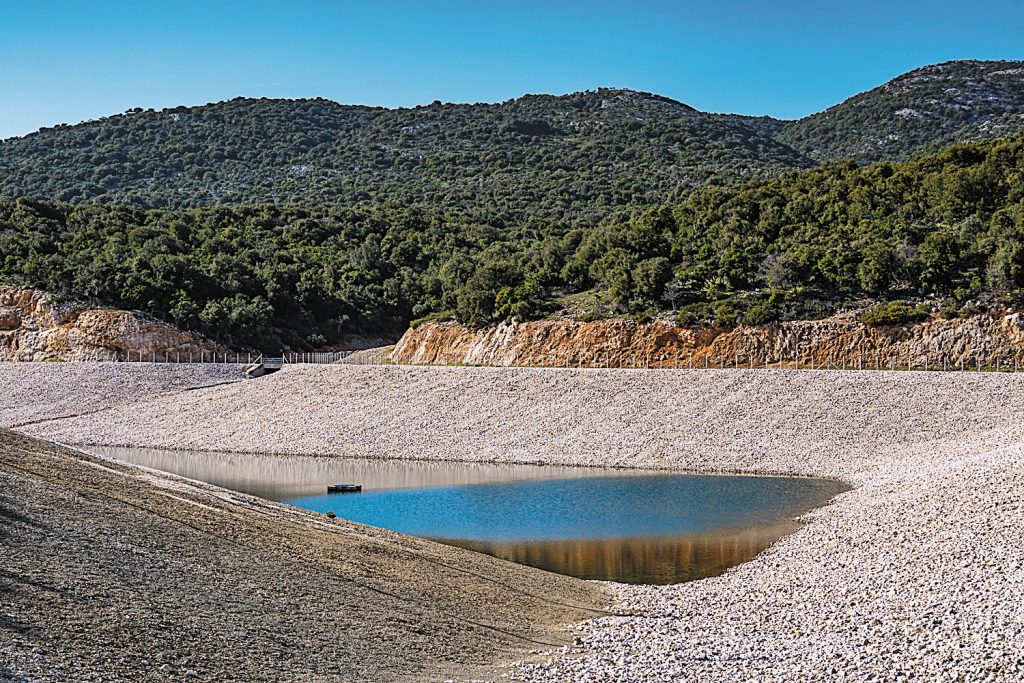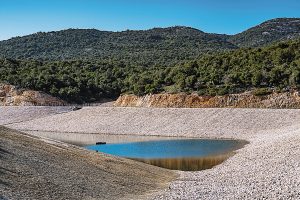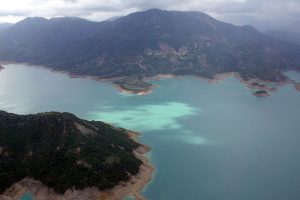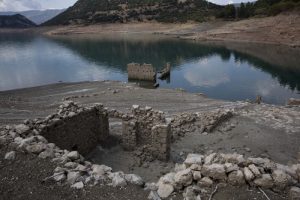The village had disappeared beneath the waters of a lake created by the nearby Mornos dam in the 1970s. However, the level of the Mornos reservoir – the greater Athens-Piraeus area’s main water source – has dropped dramatically, bringing both the sunken village of Kallio, and concerns about water scarcity, to the surface.
It’s a situation now evident across the east Mediterranean country, as water reserves in reservoirs, lakes and dams have dropped to alarmingly low levels over the recent period. The negative development is the result of successive years of insufficient rainfall combined with higher water consumption – as nearly 35 million visitors flock to the country every year – and even greater irrigation needs.
The situation has led experts to warn that “we could run out of water soon, if immediate and decisive action isn’t taken.”
“Satellite images show that Lake Mornos has already shrunk significantly. At the start of September 2023, it contained 970 million cubic meters of water, while now, just one year later, there are only 680 million, that’s a 30% reduction,” according to Kostas Lagouvardos, the director of research at the National Observatory of Athens (NOA) and coordinator of the Meteo unit, who spoke to To Vima.
However, every one of the greater Athens area’s fresh supplementary water sources, such as the Evinos reservoir and the small lakes of Yliki and Marathon, are also recording less water quantities.
“If the current water scarcity continues, the annual deficit will be in the region of 150 million cubic meters of water,” according to Petros Varelidis, the secretary general for the natural environment and water at the environment and energy ministry.
He explained that prior to the last rainfall there were fresh water in various sources.
“In other words, as a rough estimate, we have enough water to last us four more years,” he said.
Attica prefecture’s water supply has faced problems in the recent past.
“In the early 1990s, when we had a prolonged period of drought, our water reserves plummeted to 130 million cubic meters,” Lagouvardos said.
“So, we’re still at a relatively safe level, though that does not mean that there’s no need to take precautions, as we are significantly down from last year…We will soon be entering the rain and snow season, as the season of precipitation begins in October. But if this proves to be another bad year in terms of rainfall, we may, indeed, find ourselves facing a serious problem next year,” he added.
“It all depends on what happens in the months ahead. However, weather wise, we can look ahead to a lot of rainfall over the next six months, especially in western Greece.”
Islands face the most pressing problem of water scarcity
The specter of water scarcity hangs over much of the country, but is particularly acute on most Aegean islands, especially in the Cyclades and the Dodecanese chains, and the large island of Crete.
“At the national level, the problems are primarily concentrated on the islands, including Crete,” according to Olga Kotselidou, the general manager of the Hellenic Association of Municipal Water and Sewerage Enterprises (EDEYA).
“In fact, a state of emergency has already been declared on some islands, such as Leros and Sifnos,” she said
Lagouvardos explained that the magnitude of the threat can vary, even at the local level.
In one example, while the water level at the Aposelemi dam in eastern Crete is alarmingly low, the situation in western Crete is not so pressing. For him, it is the Cyclades that are facing the biggest problem. As he noted: “Over the last two years, those islands have experienced only extremely limited rainfall. Crucially, these are places that have historically received low rainfall in any case. And yet this year we’ve witnessed a further 30%-40% decrease in certain areas.”
Just as worrying is the fact that water reserves are also shrinking in large mainland provinces such as the Peloponnese and central Macedonia, whose water supply is traditionally viewed as being secure, the director general of EDEYA said.
Elissavet Feloni, who lectures on hydrology at the University of West Attica, lists the environmental characteristics that can lead to reservoirs drying up in record time.
“There’s a typical pattern here, which we observed last winter. First, limited snowfall, which means a reduction in run-off and water stored underground. In other words, without adequate amounts of snow, the aquifers that feed the springs cannot replenish themselves. Next, limited rainfall. That is, a prolonged period without rain of the sort we have witnessed over the last couple of years. Low rainfall has a direct impact on river flows and, ultimately, on the water reserves stored in reservoirs. Finally, very high temperatures—of the sort we have been experiencing since early this summer—contributes to faster losses through evaporation. These are the conditions that can cause serious water resource problems.”
Combine the above with increased consumption during the summer months for irrigation, domestic use and tourism, and the situation starts to look critical.
Lagouvardos also noted the importance of snow in the cooler, mountainous parts of the country.
“As far as snow is concerned, one of the reasons we had such limited snowfall in western Greece, too, were the high temperatures recorded last winter, which were actually the warmest ever recorded in the country,” he said, adding: “ The lack of snow was an issue last year. We need more snow and lower temperatures, so any snow that falls keeps on melting through till late spring, slowly feeding into the underground aquifers and flowing into our reservoirs. We want the rain to fall steadily, too, because when there’s a downpour it simply flows straight into the sea and is wasted. For example, several parts of Thessaly, which received tremendous amounts of rain in September 2023, are currently experiencing water shortages, because the water that fell wasn’t collected, it was lost,” the NOA researcher said.
Lagouvardos also pointed to the effects of the prolonged drought, which causes the arid soil to soak up every drop of rain that falls.
“In western Greece, where it has rained in recent days, the water that fell was absorbed by the soil, which was bone dry due to the preceding drought. This is useful, of course, as the aquifers are recharged and the water table rises, but we need water to flow into our reservoirs, too.”
